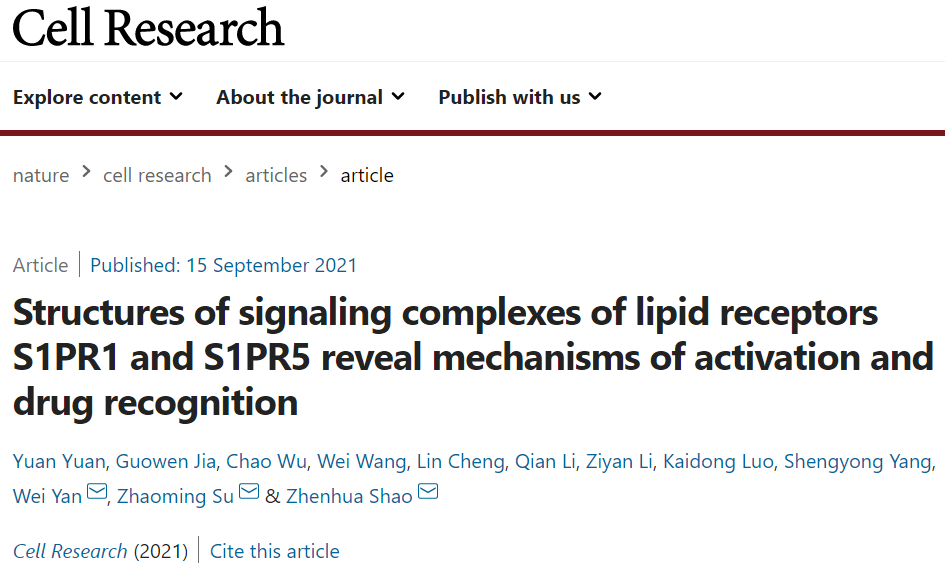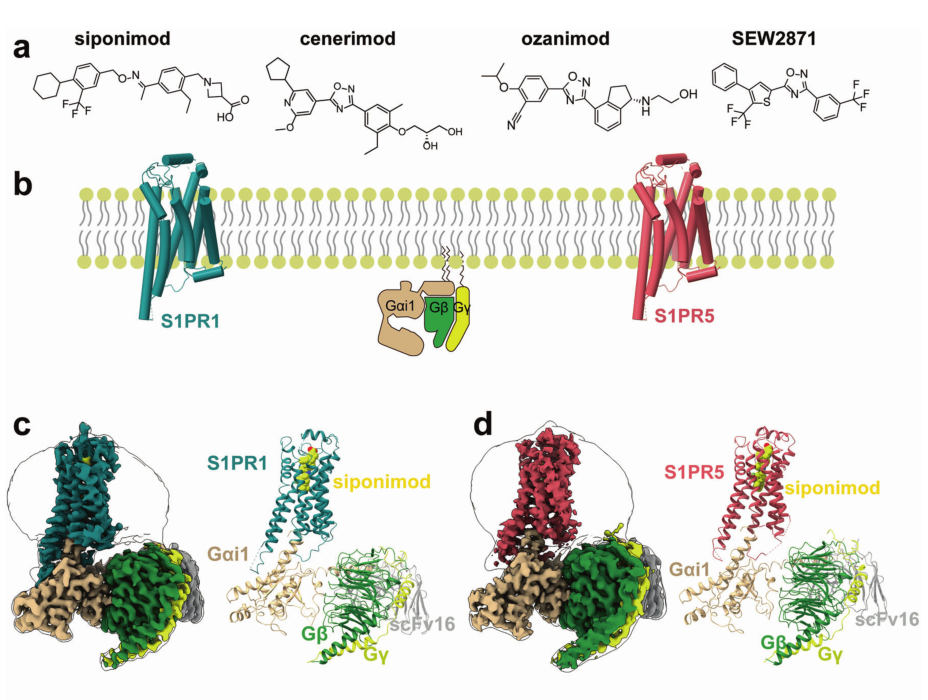
In collaboration with Prof. Zhaoming Su’s team, Zhenhua Shao-Wei Yan research teamof West China Hospital of Sichuan University published their latest research findings "Structures of Signaling Complexes of Lipid Receptors S1PR1 and S1PR5 Reveal Mechanisms of Activation and Drug Recognition" in Cell Research in September. The researchers have made significant progress in the field of human lipid receptor signal transduction. “The S1P-S1PR signaling system is an effective therapeutic target for multiple diseases, including autoimmune disorders, inflammation, cancer, and even COVID-19. Accordingly, drug discovery efforts have focused on the interactions of receptors with chemically distinct ligands with subfamily cross-reactivity and individual specificity.” (Introduction)

Fig. 1: Overall cryo-EM structures of the S1PRs–Gi heterotrimer complexes.
“Sphingosine-1-phosphate (S1P) is an important bioactive lipid molecule in cell membrane metabolism and binds to G protein-coupled S1P receptors (S1PRs) to regulate embryonic development, physiological homeostasis, and pathogenic processes in various organs. S1PRs are lipid-sensing receptors and are therapeutic targets for drug development, including potential treatment of COVID-19. Herein, we present five cryo-electron microscopy structures of S1PRs bound to diverse drug agonists and the heterotrimeric Gi protein. Our structural and functional assays demonstrate the different binding modes of chemically distinct agonists of S1PRs, reveal the mechanical switch that activates these receptors, and provide a framework for understanding ligand selectivity and G protein coupling.” (Abstract)
Yuan Yuan, Guowen Jia, Chao Wu, Wei Wang contributed equally as the first authors. The corresponding authors include Zhenhua Shao, a research fellow, Zhaoming Su, a research fellow and Wei Yan, a research associate.
The research was funded by the Ministry of Science and Technology, the National Natural Science Foundation of China and West China Hospital of Sichuan University. It also received support from the West China cryoelectron microscope platform of Sichuan University and the cryoelectron microscope center of the Southern University of Science and Technology.
